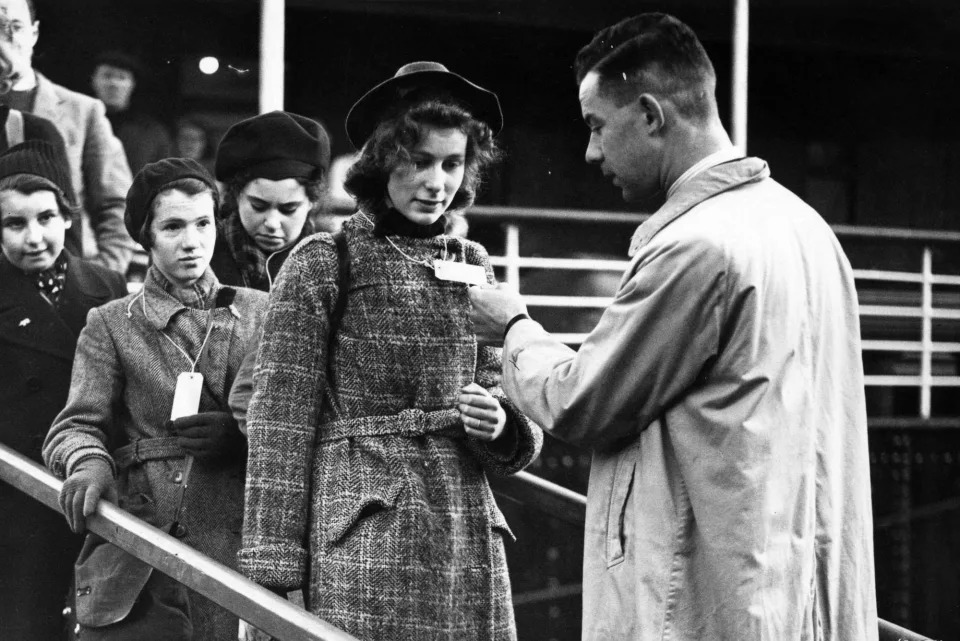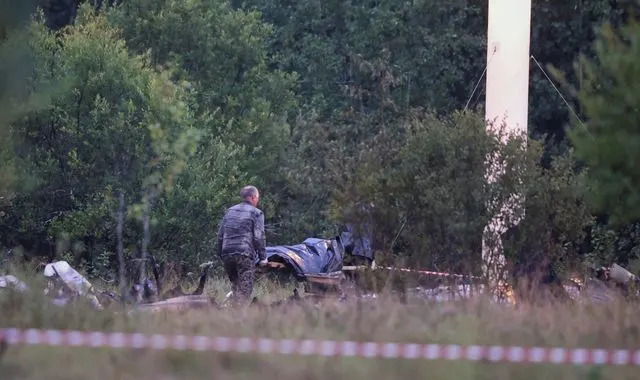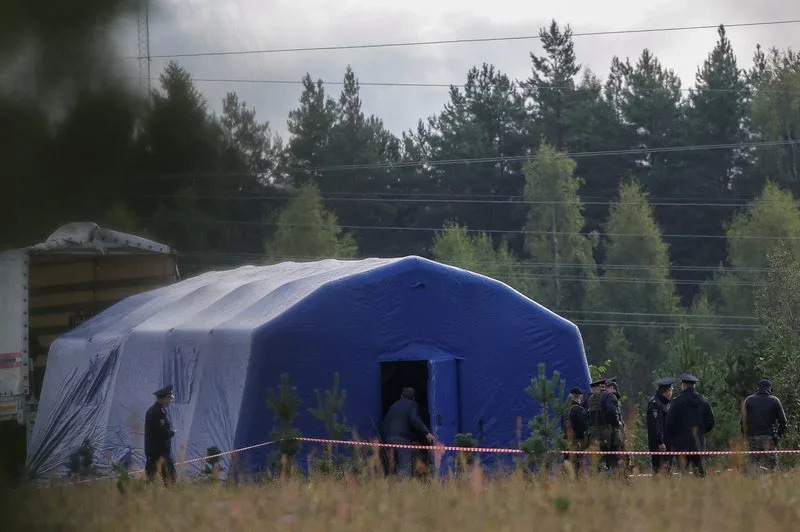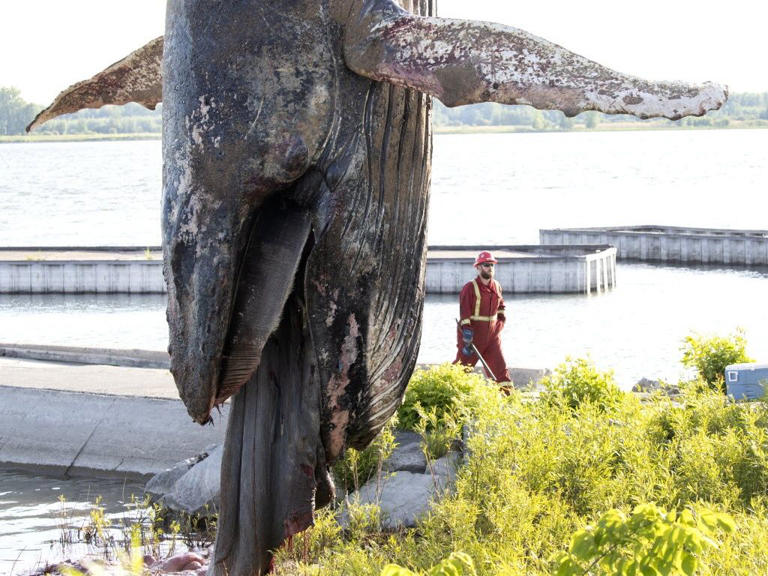Suella Braverman’s Conservative conference speech was a rejection of every decent value the UK used to espouse – Joyce McMillan
Joyce McMillan
THE SCOTSMAN
Thu, 5 October 2023

German-Jewish children, members of the 'Kindertransport' group, arrive in England in 1938. Most of their parents were not allowed to come and many were murdered in the Nazi Holocaust (Picture: Central Press/Getty Images)
There are moments in politics that sear themselves on the memory; and I have a feeling that Suella Braverman’s Conservative party conference speech of 2023 is emerging as one of those pivotal events. The Home Secretary was already, of course, a highly controversial figure, not least for her speech in Washington last week denouncing British multiculturalism as a failure.
On Tuesday in Manchester, though, she took her thoughts much further; in a speech which – like some others at Tory conference this week – consciously or unconsciously echoed the language of the global extreme right. Braverman warned of an imminent “hurricane” of migration against which the UK must defend itself, in terms which recall the “coming storm” rhetoric of many of the conspiracy theorists who stormed the US Capitol in January 2021.
Her recipe for this defence essentially involves ditching any concept of universal human rights, and if necessary dissociating the UK both from Refugee Convention of 1951 and from the European Convention of Human Rights, substantially drawn up by British lawyers in the immediate aftermath of the Second World War. She then launched into a ferociously “othering” attack on all those who support such rights, as a privileged “ruling class” who never pay the price for their own “luxury” opinions; and dismissed opponents of Brexit as people embarrassed by patriotism, and only interested in unrestricted travel to their second homes in France.
And at that point, as the conference cheered Braverman to the echo, I felt a kind of cracking in my heart and brain that’s hard to describe. Sixty-two per cent of those who voted in Scotland were opposed to Brexit. Yet in Braverman’s world, we are all members of some rich elite only interested in easy travel to our French villas; and the same apparently goes for all of the 16 million, across the UK, who voted the same way.
This was a farrago of fear and hate-mongering, in other words, partly directed against millions of ordinary British people; and there are at least three things worth saying about it. The first is that while it has always been an easy trick for unprincipled politicians to turn the frustration and fear of marginalised people against migrants, and other minorities such as trans people, it’s also true that across Britain, there are millions of ordinary people who do care about the rights that have been won over the past 70 years – for women, gay and trans people, workers, disabled people and ethnic minorities, among others – and who feel deeply threatened by hostile rhetoric that paves the way for possible erosion and reversal of those rights, as in some US states today.
Secondly, it’s worth noting that the same applies to refugee rights. Both Braverman herself, and Rishi Sunak, often seek to imply that past generations of refugees and migrants, including their own parents, were somehow different from, and more acceptable than, the migrants and refugees of today. Yet as any student of migration knows, every previous wave of migrants, including Jews fleeing from Nazi Germany in the late 1930s, have been subjected to exactly the same predictable repertoire of hate-mongering language and imagery – including accusations of cultural otherness, possible criminality, or intention to exploit British “generosity”.
The idea that the Refugee Convention is out of date may be a convenient one for governments that want to close their borders against the present crisis; but it is a lie, and a betrayal of the generation who sought to ensure that governments could never again refuse refuge to those in need, on such spurious and bigoted grounds.
Thu, 5 October 2023

German-Jewish children, members of the 'Kindertransport' group, arrive in England in 1938. Most of their parents were not allowed to come and many were murdered in the Nazi Holocaust (Picture: Central Press/Getty Images)
There are moments in politics that sear themselves on the memory; and I have a feeling that Suella Braverman’s Conservative party conference speech of 2023 is emerging as one of those pivotal events. The Home Secretary was already, of course, a highly controversial figure, not least for her speech in Washington last week denouncing British multiculturalism as a failure.
On Tuesday in Manchester, though, she took her thoughts much further; in a speech which – like some others at Tory conference this week – consciously or unconsciously echoed the language of the global extreme right. Braverman warned of an imminent “hurricane” of migration against which the UK must defend itself, in terms which recall the “coming storm” rhetoric of many of the conspiracy theorists who stormed the US Capitol in January 2021.
Her recipe for this defence essentially involves ditching any concept of universal human rights, and if necessary dissociating the UK both from Refugee Convention of 1951 and from the European Convention of Human Rights, substantially drawn up by British lawyers in the immediate aftermath of the Second World War. She then launched into a ferociously “othering” attack on all those who support such rights, as a privileged “ruling class” who never pay the price for their own “luxury” opinions; and dismissed opponents of Brexit as people embarrassed by patriotism, and only interested in unrestricted travel to their second homes in France.
And at that point, as the conference cheered Braverman to the echo, I felt a kind of cracking in my heart and brain that’s hard to describe. Sixty-two per cent of those who voted in Scotland were opposed to Brexit. Yet in Braverman’s world, we are all members of some rich elite only interested in easy travel to our French villas; and the same apparently goes for all of the 16 million, across the UK, who voted the same way.
This was a farrago of fear and hate-mongering, in other words, partly directed against millions of ordinary British people; and there are at least three things worth saying about it. The first is that while it has always been an easy trick for unprincipled politicians to turn the frustration and fear of marginalised people against migrants, and other minorities such as trans people, it’s also true that across Britain, there are millions of ordinary people who do care about the rights that have been won over the past 70 years – for women, gay and trans people, workers, disabled people and ethnic minorities, among others – and who feel deeply threatened by hostile rhetoric that paves the way for possible erosion and reversal of those rights, as in some US states today.
Secondly, it’s worth noting that the same applies to refugee rights. Both Braverman herself, and Rishi Sunak, often seek to imply that past generations of refugees and migrants, including their own parents, were somehow different from, and more acceptable than, the migrants and refugees of today. Yet as any student of migration knows, every previous wave of migrants, including Jews fleeing from Nazi Germany in the late 1930s, have been subjected to exactly the same predictable repertoire of hate-mongering language and imagery – including accusations of cultural otherness, possible criminality, or intention to exploit British “generosity”.
The idea that the Refugee Convention is out of date may be a convenient one for governments that want to close their borders against the present crisis; but it is a lie, and a betrayal of the generation who sought to ensure that governments could never again refuse refuge to those in need, on such spurious and bigoted grounds.

Suella Braverman's speech to the Conservative conference dismissed the millions of people who voted against Brexit and all those who believe in providing a safe haven for refugees
(Picture: Christopher Furlong/Getty Images)
The final chilling aspect of Braverman’s speech, though, was its absolute refusal to acknowledge the complexity and diversity of the UK itself. When Braverman talks about cultural integration and British values, she’s clearly not speaking about the Gaelic culture of the Western Isles, or the working-class culture of Glasgow or Liverpool, or traveller culture, or the long cultural history of the Labour movement; what she wants, rather, is universal conformity to the culture of the actual ruling class – bankers, politicians, media leaders, party donors – to which she now belongs.
And to call this attitude divisive is a profound understatement. It’s almost a decade now, after all, since the growing cultural and practical indifference of the modern Conservative governments to the views and, it sometimes seems, the very existence of Scotland, Wales and Northern Ireland, led 45 per cent of Scottish voters to choose independence in the 2014 referendum; I did so myself.
Never, though, in my own long process of disillusion with a British state which once gave my generation so much, during its successful postwar experiment with social democracy, have I felt as abandoned, as stateless, and as fearful for the future of these islands, as I did at the end of Braverman’s speech. It is terrifying to see this kind of right-wing thuggery – unreprimanded by the Prime Minister, and not adequately opposed or condemned by Labour – at the heart of UK government; heartbreaking to see all that my parents’ generation tried to build in postwar Britain not only undermined by decades of right-wing economics, but now also dismissed and despised, as politically correct “luxury” nonsense.
Nor do I have any illusions, in the current political and global climate, about how difficult it would be to build an independent Scotland that would do better. Braverman’s speech, though – and the silence with which it has largely been greeted by the British political class – marks the comprehensive rejection of every decent value for which Britain, in its better moments, once claimed to stand. And over time, it can therefore only hasten the break up of Britain, as the nations of these islands search for a way forward based on consensus and reality, rather than on a politics of deliberate division, fuelled by conspiracy theories, misinformation, and lies.
The final chilling aspect of Braverman’s speech, though, was its absolute refusal to acknowledge the complexity and diversity of the UK itself. When Braverman talks about cultural integration and British values, she’s clearly not speaking about the Gaelic culture of the Western Isles, or the working-class culture of Glasgow or Liverpool, or traveller culture, or the long cultural history of the Labour movement; what she wants, rather, is universal conformity to the culture of the actual ruling class – bankers, politicians, media leaders, party donors – to which she now belongs.
And to call this attitude divisive is a profound understatement. It’s almost a decade now, after all, since the growing cultural and practical indifference of the modern Conservative governments to the views and, it sometimes seems, the very existence of Scotland, Wales and Northern Ireland, led 45 per cent of Scottish voters to choose independence in the 2014 referendum; I did so myself.
Never, though, in my own long process of disillusion with a British state which once gave my generation so much, during its successful postwar experiment with social democracy, have I felt as abandoned, as stateless, and as fearful for the future of these islands, as I did at the end of Braverman’s speech. It is terrifying to see this kind of right-wing thuggery – unreprimanded by the Prime Minister, and not adequately opposed or condemned by Labour – at the heart of UK government; heartbreaking to see all that my parents’ generation tried to build in postwar Britain not only undermined by decades of right-wing economics, but now also dismissed and despised, as politically correct “luxury” nonsense.
Nor do I have any illusions, in the current political and global climate, about how difficult it would be to build an independent Scotland that would do better. Braverman’s speech, though – and the silence with which it has largely been greeted by the British political class – marks the comprehensive rejection of every decent value for which Britain, in its better moments, once claimed to stand. And over time, it can therefore only hasten the break up of Britain, as the nations of these islands search for a way forward based on consensus and reality, rather than on a politics of deliberate division, fuelled by conspiracy theories, misinformation, and lies.















